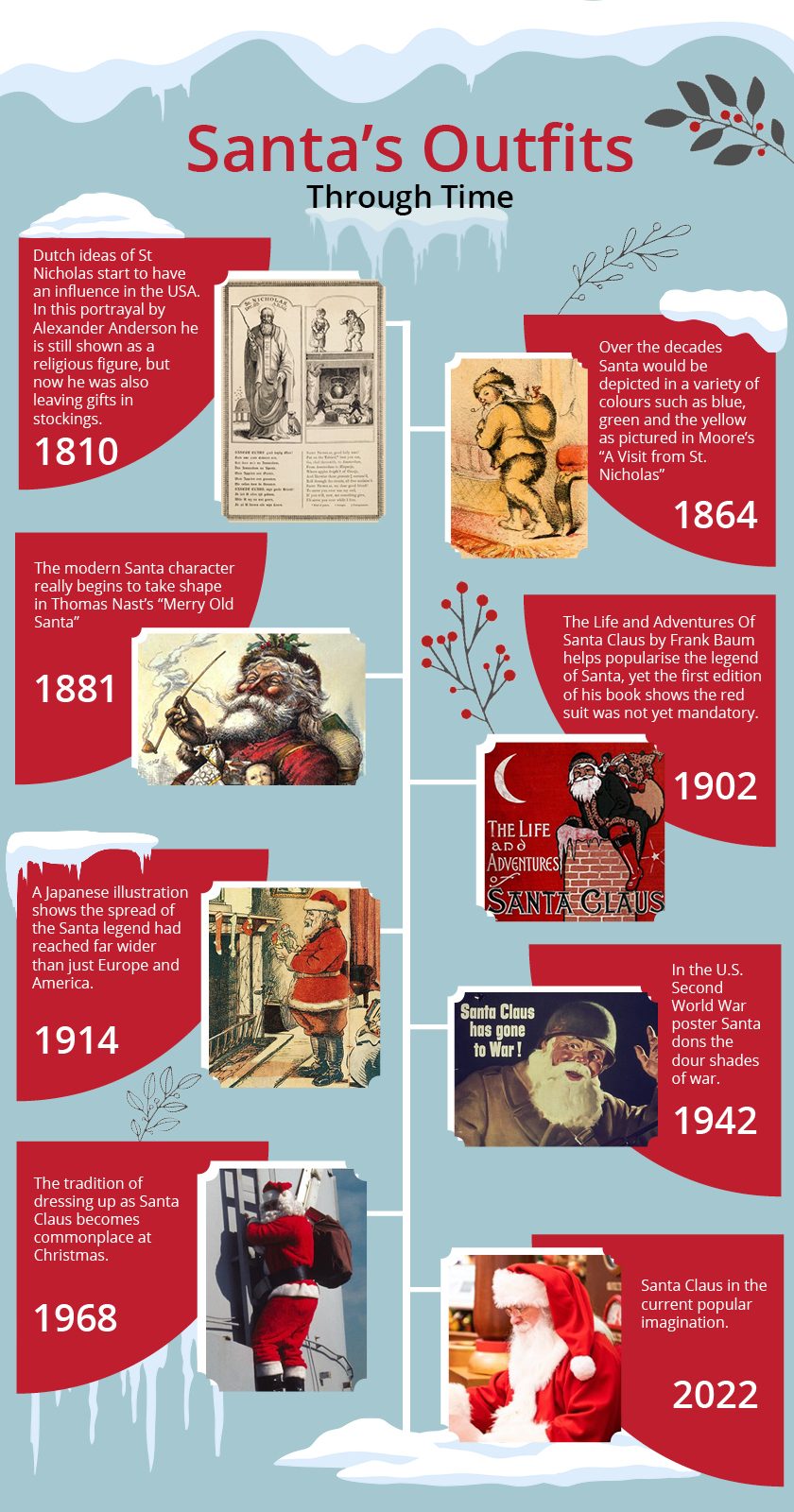Putting Santa (and anything else) on a Timeline

Dr Emily Thomas, Department of Philosophy, writes on space and time in seventeenth to early twentieth century philosophy. She shows us how you can turn any history into a timeline - this one was inspired by a history of Santa Claus.
Today, timelines are everywhere: serious timelines about politics, and sweeter ones about chocolate. Because timelines are all around us, it can be difficult to imagine a world without them. Yet timelines were invented relatively recently.
Arguably, British scientist-philosopher Joseph Priestley created the first timeline: his 1765 A Chart of Biography plots over 2,000 ‘great’ figures through time, from Cleopatra to Newton. Priestley’s Chart proved a massive hit, running through at least 19 editions, and was amongst the first acquisitions of the new United States Library of Congress. In his day, the Chart even overshadowed Priestley’s discovery of oxygen. Within a few years, timelines abounded.
I’ve been working on the philosophy underlying Priestley’s Chart. I argue Priestley was pushed to picture time using lines by his views on ideas. Abstract ideas include ‘triangle’, ‘whiteness’, and the number ‘3’.
Many early modern philosophers held we obtain these ideas via a process of abstraction: our idea of ‘triangle’ is abstracted from individual triangles, including equilateral and right-angled triangles. Humans can’t mentally picture such ideas: it is impossible to picture a ‘triangle’ that is equilateral and right-angled all at once. Priestley claimed that although we cannot picture abstract ideas, we can represent them, and argues our abstract idea of ‘time’ is best represented by lines. The timeline was born.
Priestley’s Chart revolutionised the representation of history, and changed philosophy. As philosophers began conceiving time as a line, this changed how they thought of time. For example, all the points on a line co-exist, and this led them to think that all times co-exist.
The theoretical existence of past and future times invited speculation on time travel: if the Christmas of 1864 is as real as now, perhaps it can be visited. A magical Christmas indeed.
Find out more
Read more about Emily Thomas' work
Study Philosophy at Durham

